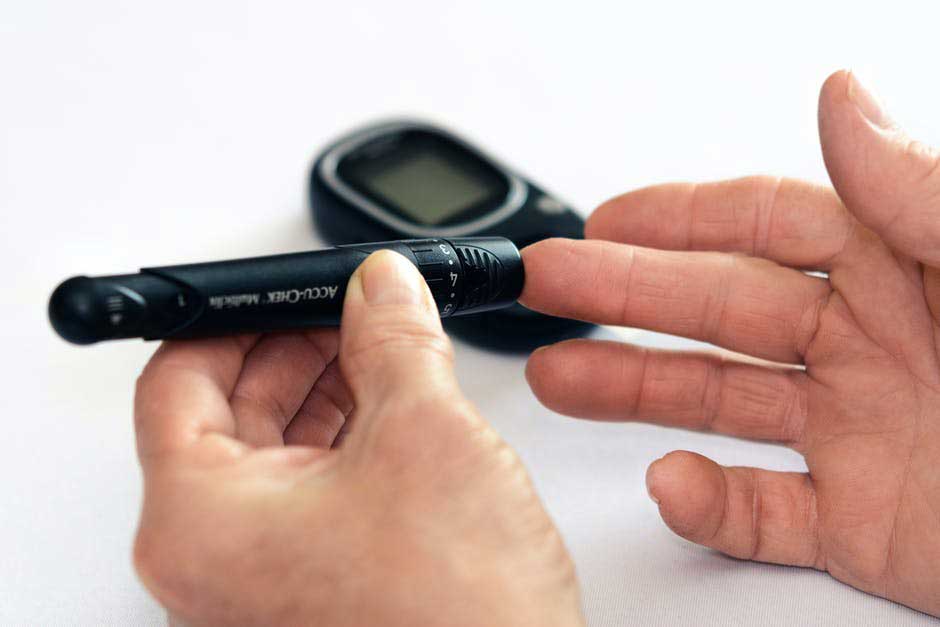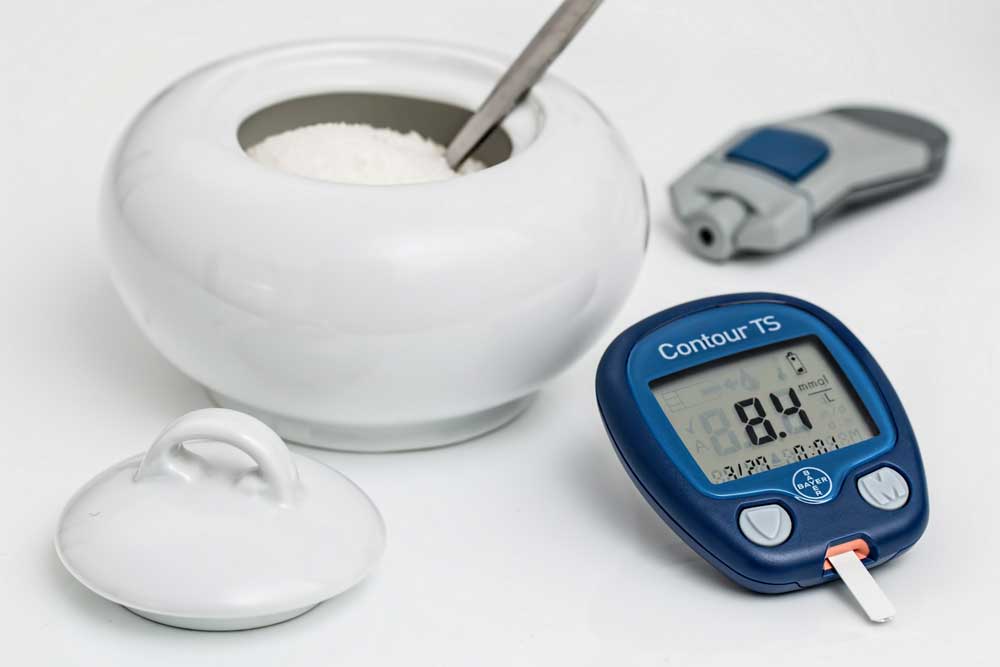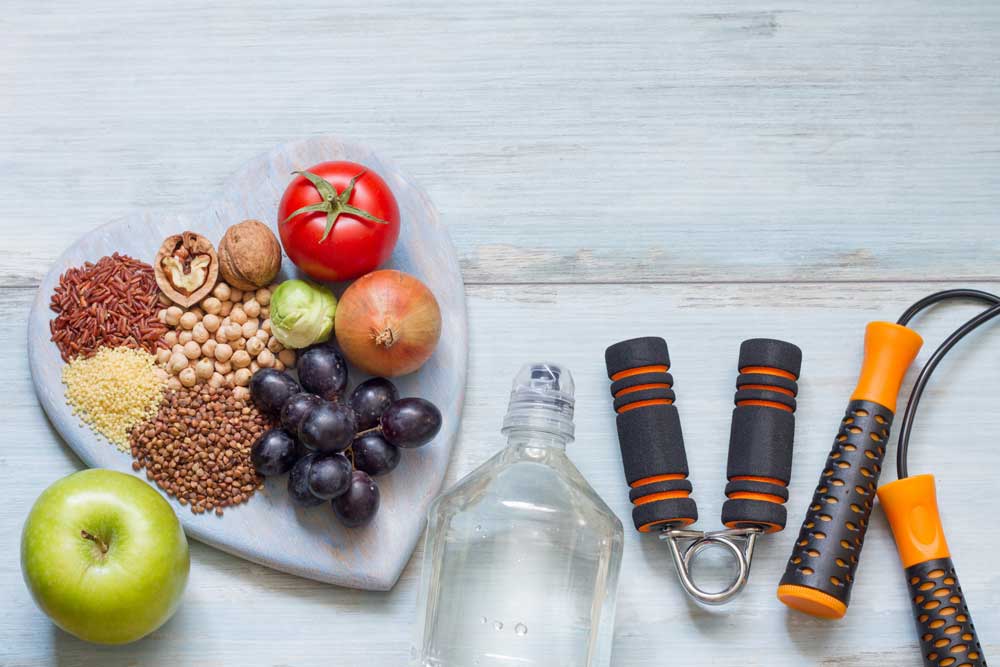
by Ingredia USA | Nov 29, 2021 | Blood Sugar Management
Most people have probably heard the term ”blood sugar” a thousand times over, but the reality is that most people don’t really know what it means.
Most of us know it’s important to have stable blood sugar levels. However, there is still a sense of mystery around what our blood sugar levels actually do for us on a daily basis.
To learn more about how unstable blood sugar levels can disrupt your health, this blog is for you.
What Does the Term ”Blood Sugar” Mean?
Contrary to what many might think, blood sugar doesn’t exactly point to sugar levels in the blood. Well, not the type of sugar you add to your coffee, anyway. But rather, the amount of energy present in our bloodstream.
Sugar in the body is known as glucose and is our main energy source that powers us through our daily activities.
When you consume carbohydrates the body breaks down its components in the digestive tract. Most of these components are converted to glucose, i.e. energy.
So, in short, the term blood sugar refers to glucose energy levels present in the blood.
How Blood Sugar Levels Affect the Body
You can think of your blood sugar levels as the lead controller of many metabolic processes in the body. In other words, blood glucose levels dictate how hungry you are. They also dictate your energy levels, cravings, moods, sleep quality, and more.
In order for humans to feel their best, well-balanced blood sugar levels are important. You don’t want your blood glucose levels to be too high, or too low, either.
When this happens, a myriad of unwanted processes takes place in the body — much like a domino effect. For example, when your blood sugar is too low, you could feel lethargic, irritable, have brain fog, and sleep poorly.
If your blood glucose levels are too high, this can lead to issues such as weight gain, poor energy levels, and skin problems. Not-to-mention, long-term conditions such as diabetes.
How Does Your Body Balance Blood Sugar Levels?
To achieve well-balanced blood sugar levels, your body relies on two important hormones: insulin and glucagon.
Whenever you consume something, your pancreas secretes insulin into the bloodstream.
The purpose of insulin is to assist with blood sugar regulation. You can think of insulin as a traffic controller. It helps to determine how much glucose to send to your cells for energy, and how much to keep in your bloodstream.
Most of the glucose that insulin regulates goes to your liver cells, muscle cells, and fat cells. They store the glucose as energy, which we use up throughout the day.
Without enough insulin, glucose levels in the blood would remain too high. This results in a major blood sugar imbalance. This can result in a myriad of conditions, and chief among them is Type 2 diabetes.
Glucagon is also important as it assists in the processing of glucose in the body. When glucose reaches the liver cells, glucagon is responsible for breaking down glycogen into glucose.
It’s also responsible for glucose synthesis and inhibits the formation of glycogen. Without this hormone, glucose would not make it back into your bloodstream for circulation.
Insulin Resistance
Insulin plays the biggest role in regulating blood sugar levels. It’s an adaptive hormone that can quickly regulate the amount of sugar in the blood. And most of the time, it doesn’t matter how much sugar or carbohydrates you’ve actually consumed.
But it’s no superhero, insulin has a limit to how much it can handle. When blood sugar levels are balanced, regulating excess glucose is a simple task that takes an average of 1-2 hours in healthy individuals.
However, when you consume excess sugar this process goes into overdrive and becomes stressed. Ultimately, this leads to insulin resistance.
As your blood becomes oversaturated with glucose, your body needs more and more insulin to manage your blood sugar levels. Eventually, your body can become insulin resistant and will not be able to regulate or process glucose effectively.
This can result in a number of conditions, but the worst among them is also Type 2 diabetes.
Why Balanced Blood Sugar Levels Are Important
As you can see, your body is sensitive to the number of carbohydrates and sugars you consume. Whether you consume too little or too much, unbalanced blood sugar levels can lead to a host of health issues.
Here’s how you can benefit from keeping your blood sugar levels in check:
- Steady levels of energy — when your blood sugar is too high, this can result in fatigue, weight gain, obesity, and depression. When they are too low, this can result in dizziness, fatigue, headaches, and drowsiness
- Improved focus — glucose is fuel for the brain and, in short, provides fuel for effective cognitive function
- Weight control — unbalanced sugar levels can lead to excessive hunger, cravings, and insulin resistance. All of which can lead to weight gain and obesity
- Improved skin conditions — spikes in blood glucose cause insulin levels to increase, as well as the production of androgens. This can result in acne and other skin problems
Aside from these benefits, stable blood glucose levels have positive long-term effects on the body.
For one, you can prevent the onset of conditions such as prediabetes and diabetes itself, which affects over 10.5 percent of the U.S. population, alone.
Once diabetes sets in, this can also lead to the onset of many other serious health conditions. Just some of these include heart disease, stroke, nerve damage, kidney disease, dementia, and more.
Even if you don’t develop diabetes in your lifetime, stable blood sugar levels can maintain your cognitive function and memory.
However, insulin resistance can impact your cerebral glucose metabolism, which can affect your memory in the long term. Ultimately, this could spur on degenerative diseases such as Alzheimer’s and dementia.
Take Your Health into Your Own Hands
Balanced blood glucose levels do more than just regulate your appetite or impact your sleep quality. In the long term, the management of your blood sugar levels can impact your longevity.
Interested in taking care of your health and what you put into your body? Learn more about our product, Pep2Dia®, for blood sugar management.

by Ingredia USA | Nov 15, 2021 | Blood Sugar Management
When you have diabetes, you have to take care to check your blood sugar levels multiple times each day. You may even have to administer diabetes medication or inject insulin when you notice that your levels are too high or too low.
If you are new to all of this, it can be difficult to figure out what is causing your levels to spike or drop depending on the time of day or what you’ve eaten. You’re not alone. In fact, there are approximately 32.4 people in the United States who have diabetes and have to monitor their glucose levels to get through the day.
Continue reading to learn what causes abrupt changes in your blood sugar levels. You’ll also learn how to better manage blood sugar.
What Affects Blood Sugar Levels?
Several things may play a part in the fluctuation of your blood sugar levels. However, everyone is different. What affects one person might not even affect the next.
Dehydration can cause your blood sugar levels to spike. When you don’t drink enough water, there isn’t enough water in your bloodstream to balance the amount of concentrated glucose that is present in the blood. When this happens, you’ll notice a spike in your blood sugar levels.
Eating carbohydrates at all will cause your blood sugar levels to rise due to them being turned into sugars to give you an energy boost. This is normal. However, eating too many carbohydrates can cause a huge spike making you feel off. Fatty foods may also cause you to feel sluggish and increase your blood glucose level. It can even cause your body to become resistant to insulin.
You may also find that eating too frequently or at the wrong times can cause your blood sugar to fluctuate.
The fluctuation of hormones (due to any number of reasons) can mess with your blood sugar. When you are ill or dealing with an infection, your body will increase hormones (while also increasing blood sugar levels) to fight off the virus or bacteria.
An increase in testosterone for men and estrogen for women can cause an insulin reaction. For women, life events like pregnancy, menstruation, and menopause can cause a fluctuation in hormones causing high blood sugar.
Stress can cause your blood sugar to skyrocket. It can also cause you to develop insulin resistance.
All of these things can cause you to struggle with managing your blood sugar.
Changes In Blood Sugar Levels
Your blood sugar levels may fall in a safe range (70 to 126 mg/dL), but when it’s too high or too low, problems may occur. There are two types of changes that occur when the amount of glucose in the blood isn’t balanced.
Hyperglycemia
When there is too much glucose (more than 126 mg/dL) in your blood, you are experiencing hyperglycemia. In the long term, hyperglycemia can cause issues with kidney and eye disease. Heart attacks and strokes are possible. Long-term hyperglycemia can also cause nerve damage and circulation disorders.
When experiencing hyperglycemia, you might notice:
- Increased thirst (polydipsia)
- Increased hunger (polyphagia)
- Increased urination (polyuria)
- Dry mouth (xerostomia)
- Fatigue
- Anxiety
- Blurred vision
- More infections
- Slowed healing (cuts and sores)
These symptoms occur when:
- You eat too much food
- You don’t get enough physical activity
- You skip doses of medication and meals
- You get stressed
- You are ill or have an infection
Getting your number to come down so that you begin to feel better is very important to your health and wellbeing.
Hypoglycemia
When there is not enough glucose (less than 70 mg/dL) in your blood, you are experiencing hypoglycemia. Hypoglycemia prevents the body from functioning in a normal capacity.
Hypoglycemia symptoms include:
- Sweating
- Shaking
- Hunger
- Dizziness
- Weakness
- Headache
- Fainting
Your blood sugar is likely to drop when:
- You don’t eat enough food
- You overexert yourself with physical activity
- You take too much insulin or diabetes medication
- You drink too much alcohol without eating
In severe cases, it can lead to confusion, seizures, unconsciousness, coma, or even death. Because of the weakness, you may find yourself in a position where you can’t eat or drink and you can’t administer your medications. This can lead to unconsciousness and even death.
How Can You Maintain Safer Blood Sugar Levels?
You will find that maintaining a safe blood glucose level comes naturally when you:
- Drink enough water
- Avoid skipping meals
- Take your medication on time
When you have extremely low blood sugar levels, it’s important to remedy the situation immediately. You can do this by taking glucose tablets, drinking fruit juice or regular soda, or eating some hard candy.
Blood sugar management plays a huge role in your success. You will want to accurately time your intake of food and administering your medication. It’s important to monitor your blood sugar levels, food intake, medication, and physical activity. Writing it down in a journal along with symptoms you may be feeling can help you to keep an accurate record.
You can use the journal to communicate effectively with your doctor and to track how you feel when your glucose levels are out of sorts.
If you are having an issue with regulating your blood glucose levels, Pep2Dia, a patented milk protein hydrolysate, might be able to help you out.
Managing Your Blood Sugar Levels
It’s important to your overall health and wellbeing to manage your blood sugar levels. Make sure you are taking the precautions that you should be to keep your blood sugar at a healthy level… not too low and not too high.
Contact us today for more information on blood sugar management and what you can do to keep yourself within your target level. We’d be happy to answer any questions you might have about using Pep2Dia to help regulate your blood sugar levels.

by Ingredia USA | Nov 1, 2021 | Blood Sugar Management
According to the latest research, approximately 34.2 million Americans (that’s 10.5 percent of the population) have been diagnosed with diabetes.
Are you part of this group? Do you need help figuring out the right diet that will help you with your blood sugar management?
If you’re not sure where to begin, read on.
Listed below are some foods you can add to your meals today to regulate blood sugar and start feeling better. We’ll also share some foods you can eliminate to achieve the same result.
Broccoli
Broccoli makes a great addition to your diet if your goal is diabetes self-management.
Both broccoli and broccoli sprouts contain sulforaphane. Sulforaphane is a plant chemical that’s produced when broccoli is chewed or chopped. It has antidiabetic effects and helps to lower blood sugar, as well as oxidative stress markers, while also increasing insulin sensitivity.
Broccoli is also a good source of fiber. Eating plenty of high-fiber foods can help you to avoid blood sugar spikes and stay fuller longer, which can be useful if you’re trying to lose weight and need help resisting cravings.
Seafood
Fish and shellfish are excellent sources of protein. Eating a high protein diet can help you to keep your blood sugar levels under control and feel more satiated after a meal is finished.
It’s important to note, too, that fatty fish are also beneficial for blood sugar balance. For example, salmon and sardines have been shown to produce more stable blood sugar levels after eating, even better than leaner types of fish.
Pumpkin and Pumpkin Seeds
Pumpkin and pumpkin seeds are both tasty and healthy foods to include in your diet for better blood sugar. Pumpkin contains fiber and a type of carbohydrate known as polysaccharides. Polysaccharides have significant blood sugar-balancing properties.
Pumpkin seeds are also beneficial because they contain magnesium. Magnesium is a mineral that is known for balancing blood sugar. As a bonus, it has relaxation-promoting properties, too.
Beans and Lentils
Beans and lentils are also good choices. They’re packed with magnesium, fiber, and protein, all of which help to lower blood sugar.
Research also shows that people who add beans and other legumes to their high-carb meals have lower post-meal blood sugar levels than those who don’t.
For those who have not been diagnosed with diabetes but are still concerned about blood sugar balance, adding beans and lentils to your diet now could make a big difference. Another study shows that these foods may help to prevent diabetes.
Strawberries
Many people assume that they have to give up fruit altogether when they’re working on managing blood sugar. That’s not true, though.
Strawberries are a sweet (but low sugar) fruit that can easily be added to your diet for better blood sugar levels. They contain fiber and antioxidants, too, which can reduce oxidative stress and keep your cells healthy.
Other types of berries are also beneficial to those dealing with blood sugar issues. Blueberries, blackberries, and raspberries offer their own unique benefits, but they’re all good sources of antioxidants and fiber (without a lot of sugar).
Nuts
Nuts, from almonds and cashews to pistachios and walnuts, are great snacks for those who need help keeping their blood sugar under control.
They’re good sources of healthy fats, and they also contain fiber for better blood sugar balance.
Some nuts also contain omega-3 fatty acids and vitamin E, too. These nutrients can help to prevent blood sugar spikes and they protect your heart!
Oatmeal
Oatmeal isn’t just a tasty and versatile breakfast food. It can also help you to avoid blood sugar spikes and drops (as long as you don’t load it up with sugary toppings).
Oatmeal is packed with fiber, which lowers blood sugar and improves insulin sensitivity. To add more flavor to your morning (or afternoon or evening) bowl, consider adding other toppings that have blood sugar management benefits, such as strawberries or nuts.
Eggs
Eggs contain protein and healthy fats, and they can help to improve insulin sensitivity while also decreasing inflammation. They contain antioxidants, too, which protect against free radical damage and oxidative stress.
It’s important to remember that the egg yolk is your friend. Don’t throw it out, as it contains the majority of the nutrients.
Olive Oil
Healthy fats help to prevent blood sugar spikes. They also add more flavor to your food and make your meals more satisfying.
Olive oil is a great example of a healthy fat source that you can add to your diet to control blood sugar levels.
Olive oil contains monounsaturated fats, which are known for their heart health benefits, and it’s a good source of antioxidants. Combine it with some apple cider vinegar and spices to make a simple, tasty salad dressing.
Foods to Avoid for Better Blood Sugar
When it comes to learning how to manage blood sugar, there are plenty of wholesome foods you can add to your diet. At the same time, though, you may need to cut out or reduce your intake of certain things to really see progress.
Here are some examples of foods and drinks to avoid or enjoy only on occasion:
- Sugar-sweetened beverages (such as soda, fruit juice, etc.)
- Fried foods
- Sugar-sweetened cereal
- Packaged snacks (such as chips, crackers, cookies, etc.)
These foods are more likely to cause blood sugar spikes and crashes. They can also contribute to an increased risk of other health issues, such as heart problems or obesity.
Time for Better Blood Sugar Management
Not that you know more about the benefits of a healthy diet for blood sugar management, it’s time to start making some changes. Keep the tips listed above in mind so you can start regulating your blood glucose levels and making your health a priority.
Do you want to learn more about managing blood sugar? Do you need help with stress relief so you can manage diabetes more easily?
If so, Ingredia may be able to help. Contact us today to learn more about our research and how we’re working to revolutionize the dairy products you know and love.

by Ingredia USA | Oct 18, 2021 | Blood Sugar Management
Picture a brussels sprout in your mind.
Whether you’re currently gaging or dreaming about new recipes, you have an opinion. How does such a tiny vegetable elicit such a strong response?
Kids begin to form their opinions about food at a young age. As a parent, you’re responsible for helping your child to form healthy opinions and habits. Your child’s earliest experiences with food will inform what they eat for life.
Ready to raise a healthy eater? It’s never too late to teach your child about healthy eating habits! Read on to learn how to help your child develop healthy eating habits – without tears.
Healthy Eating Habits in Kids
All kids follow unique developmental pathways. Your child’s pathway toward healthy eating will have just as many twists and turns. What your child will encounter on their journey is up to their parents and caregivers.
Encouraging healthy eating habits for children must begin with a critical examination of your own eating habits. Begin by exploring your own behavior around food. Children hear and see everything, and your internal biases can impact their reactions at the table.
Do you have a verbal response when you encounter food that you don’t like? Do you insist on a clean plate? Do you discuss diets or food restrictions where children can hear?
Once you have taken some time to recognize your own language and behavior around food, you can begin to change it in subtle ways.
If you don’t want your child to throw a fit when you serve them vegetables, you shouldn’t throw one, either! If you want your child to notice their body’s fullness cues, don’t insist on a clean plate. If you want your child to select food for its nutritional value and satiating qualities, keep diet talk to a minimum.
You might find that this helps impact your own health and wellness journey in positive ways! Once you have made a few small adjustments, there are a few explicit tips and tricks that you can try.
Eat as a Family
The trope of ‘the family dinner’ has become a trope for a reason! Children need to see how adults eat, interact with, and talk about food. This is how they learn table manners and healthy eating habits.
Even the youngest children can benefit from a seat at a table! Mobile infants and toddlers are observant and love to model behavior that they see. Pull up the highchair and let your little one join the table, especially if they show interest!
Eating together as a family is also a great way to encourage mindfulness surrounding food. The focus should be on food and conversation, not distracting screens and media. This will help children notice fullness and hunger cues and respond to the needs of their bodies.
Some children pick away at meals or avoid their plates altogether, especially if you allow them to play at the table. The family meal should be an efficient affair. All family members should strive to enjoy their meal during a reasonable period of time.
Keeping to a regular, predictable meal schedule can also help children eat mindfully. Kids are naturally drawn to routines, and bodies are, too. With routines in place, your child’s hunger cues will sync up with meal and snack times, and there will be fewer battles at the table.
Offer Variety
Children, like adults, can form unconscious biases about what they think they like. A bad experience with spinach might lead to trepidation surrounding broccoli. Provide variety, and encourage tasting, but don’t demand a clear plate.
Remember that children need many exposures to a new food before they can decide if they like it. They might need to see the food on their plate as many as twenty times to form a clear opinion!
Some children do have an anxiety response to certain foods, and this is a normal part of development. Continue to offer these foods, but don’t force-feed or require that they taste anything that is causing distress. Instead, model your own enjoyment, and talk about the positive effects of the food on your body.
For example, you might say, “I like broccoli because it makes my body feel warm and energetic. It helps fill my belly up quicker and makes it easier to go to the bathroom.”
If a child shows an adverse response to a food, take it out of the rotation for a few days or weeks and try again.
Furthermore, do not confuse offering variety with cooking to order. Children should be free to make choices, but not demands. If they only gravitate toward one part of the meal, talk to them about what they liked about it and why.
Over time, you will learn more about your child’s palette. At the same time, your child will begin to learn the importance of healthy eating habits.
Food Is Not a Reward
Never use food as a reward or withhold it as a punishment. This includes requiring children to “earn dessert” by cleaning their plates. You may ask that your child eat some of their meal before serving dessert, but attaching such strong associations to “good foods” and “bad foods” can be damaging.
Furthermore, don’t withhold certain foods, regardless of your child’s body shape or size. Instead, take the opportunity to talk about moderation and “sometimes” foods. Nobody needs to eat ice cream every day, but nobody deserves to live in a world without it!
Healthy Eating Is a Family Affair
Raising healthy eaters begins with a healthy awareness of your own internalized feelings toward food. Once you have acknowledged and addressed those ingrained feelings, you will be on your way to building healthy eating habits in your child. Embrace these tips, and you can raise a healthy eater!
Ingredia is on a mission to encourage healthy eating habits in children and adults across the country. If you would like to learn more, contact us to learn about how we are making dairy products healthier for everyone.

by Ingredia USA | Oct 4, 2021 | Blood Sugar Management
In the United States, there are about 210,000 children under the age of 20 who have diabetes. Because this is such a huge issue, it is vital that you help your child learn to manage their diabetes.
Do you want to learn more about how you can help your child manage diabetes? Keep reading these tips for diabetes management.
1. Help Them Check Their Blood Sugar
Keeping tabs on your blood sugar is one of the most important parts of staying safe when you have diabetes. There are many situations where your child will need to check their blood sugar. Because of this, you need to teach your child to learn how to check their own blood sugar.
They can keep a bag full of all the supplies they need and bring them with them wherever they go. This bag should include a blood sugar meter, testing strips, lancets, and more. When necessary, it should include insulin and a glucagon emergency kit when prescribed by your doctor.
2. Learn About Diet and Exercise
Diet is one of the most important parts of managing diabetes for your child. High or low blood sugar levels can cause so many issues. So, it is important that they pay attention to what they are eating.
For example, carbohydrates and sweet foods can increase your child’s blood sugar. This can make it difficult to manage your child’s diet during parties, holidays, and other fun events.
While you can still eat yummy foods when you have diabetes, you need to make sure you are conscious of how much sugar you are having. You can help your child learn about their diet by planning out meals and snacks to eat throughout the day.
This will help them be more aware of the food that is going into their body.
Next, you want to help your child learn how exercise affects their blood sugar levels. Many people don’t realize that exercise can lower your blood sugar. This means that it is important to properly monitor your levels of blood sugar when you exercise.
If your levels are too high, you can exercise to help lower them! If they are too low, it is important to exercise less and to find ways to increase your blood sugar.
By incorporating a diet and exercise plan into your life, you can help your child learn to manage their diabetes.
3. Prepare For Specific Events
As part of your diabetes management, you want to make sure you prepare your child for the different events they will be going to. For example, if your child goes to school, you want to be sure that they know how to manage their diabetes in this different situation. This includes knowing when to eat snacks, how to administer insulin, and more.
If your child is going to an after-school event or a party with their classmates, you want to make sure there is a plan in place for this specific situation. This can help them know what supplies to pack, when to eat, and more.
Whether the events include school activities, spending time with friends, or even family vacations, you want to make sure your child has a plan to manage their diabetes in any situation.
4. Create an Emergency Plan
There are many potential emergency situations that can arise if your child has type 1 diabetes or type 2 diabetes. This is why it is vital that you create an emergency plan.
First, you want to make sure your child always has an adult nearby that is trained to help them. If your child goes to school, make sure your teacher or the school nurse can recognize the warning signs of an emergency situation.
You can write out an emergency care plan to give to your child’s friends, coaches, or other supervisors. Having a written list of what to do in an emergency situation can potentially save your child’s life. You can also make sure they have your contact information if something goes wrong.
Some common diabetic emergency situations include blood sugar that is too high or too low. By constantly monitoring blood sugar, you can prevent many of these issues.
5. Help Them Manage Their Feelings
Finally, you want to make sure you help your children learn how to manage their feelings. Learning how to adjust to a diabetes diagnosis can be challenging for your child. There are many things that they need to learn and change.
While this can be very difficult, you want to make sure your child knows that it is okay to feel upset. By acknowledging your child’s feelings, you can help them learn to overcome their difficulties and find strength.
Unfortunately, you may also find that your child may be bullied because of their diagnosis. By helping your child find ways to cope with bullying, you can help them improve their social life and build independence as they learn more about diabetes self-management.
Learn More About How You Can Help Your Child Manage Diabetes Today
Learning how to manage diabetes can be taxing for you and your child. There are many things that you need to consider. These range from the types of food they can eat and how they can attend other events. However, there are things that can help you learn to manage diabetes more effectively.
Are you looking for products that can help you? Ingredia USA can help! We have high-quality dairy ingredients that help people promote better health in the United States.
If you are interested in learning more about our products and promoting better health, contact our team today!

by Ingredia USA | Sep 20, 2021 | Blood Sugar Management
Did you know that 1 in 10 people have diabetes in the United States? Diabetes is way more common than you might think. While this number may be shocking, even more people are at risk of getting diabetes.
Approximately 1 in 3 people in the United States are prediabetic. Many people don’t even know they are prediabetic and continue to live their lives without realizing they are putting themselves at risk.
Have you ever wondered, am I at risk for diabetes?
If you are at risk for diabetes, then your nutrition should be one of the most important aspects of your life. Here is our nutritional guide for prediabetes.
What Does It Mean To Have Prediabetes?
Diabetes is a chronic disease where your body has trouble regulated your blood sugar levels due to inadequate amounts of insulin production, leading to high blood sugar levels and several other health complications.
There are two types of diabetes that you can have. Type 1 diabetes is when the body’s immune system destroys insulin-producing cells, leaving the body without insulin. This type of diabetes requires insulin shots to regulate blood sugar.
Type 2 diabetes is where the body produces insulin but is unable to use it efficiently. Type 2 diabetes is commonly treated with nutritional and lifestyle changes.
If you are prediabetic, that means you are at risk of developing type 2 diabetes. Here are some risk factors of having prediabetes:
- Overweight
- Family history of diabetes
- Not enough exercise
- Over 45 years old
- If you had gestational diabetes during pregnancy
If anything previously mentioned applies to you, you may be at risk for diabetes. Healthy eating and a healthy lifestyle could be what you need to prevent developing type 2 diabetes.
Foods To Eat When At Risk For Diabetes
Prediabetics should avoid high sugar and high carb content in their food to regulate their blood sugars. Since obesity makes your risk of developing diabetes greater, it’s important to eat healthily and get enough exercise.
Here is a nutritional guide for food choices for people at risk with diabetes:
Seafood is a great option for someone who is at risk of diabetes. A great way to level your blood sugar levels is to eat protein, and fish is a great source of lean protein.
It will also give you important nutrients and healthy fats that can help regulate your blood sugar. Since it is lean meat, it will help you stay at a healthy weight.
Leafy green vegetables are another great food to eat for a healthy lifestyle for a prediabetic. They are low in calories and carb, so that they won’t affect your blood sugar levels drastically.
They also have essential nutrients that can help prevent heart disease, which can be a health complication caused by diabetes.
Greek Yogurt is another great food option. Greek yogurt has the protein you need to regulate your blood sugar, and it also has probiotics which have been known to help with heart disease as well.
Just make sure you get a Greek yogurt that doesn’t have a lot of added sugar. There are plenty of options out there to choose from!
Some fruits are high in glycemic value, but berries are a great option for prediabetics. They are high in antioxidants and low in sugar. They will make a great topper for your Greek yogurt!
Other foods like nuts or nut butters, seeds, beans, lentils, avocados, squash, garlic, extra virgin olive oil, broccoli, and eggs are also great foods to promote healthy eating.
The main goal is to keep your sugar and carb intake low and your protein, vitamin, and healthy fat intake high. This can give you a foundation to make a personalized meal plan for your healthy lifestyle!
What To Avoid When At Risk For Diabetes
If you are at risk of diabetes, it means that your blood sugar levels are higher than they should be, but not quite at diabetic levels. This means that you can prevent diabetes by keeping your sugars low and living a healthy lifestyle.
To do so, you should avoid eating certain foods and doing certain things.
First, it is important to talk to a therapist or doctor if you are feeling stressed. Not only can stress cause you to overeat and binge on junk food, but it can also affect your overall health.
Next, you should try to avoid the following foods:
Highly processed refined carbs, like white bread, pastries, and pasta. These foods are considered high-glycemic and will make your blood sugar rise.
Sugary or alcoholic beverages. Both of these drinks will give you no nutritional value, boost your blood sugar, and can make you put on weight.
Highly sweetened snacks or desserts. If you are craving something sweet, try to eat something like fruit or something naturally sweetened. Added sugar is definitely something a prediabetic should avoid.
Live A Healthy Lifestyle
Being at risk for diabetes can sound scary, but it doesn’t have to be! You can prevent developing diabetes by living a healthy lifestyle, healthy eating, and avoiding foods that could raise your blood sugar.
Eating foods high in healthy fats, protein, vitamins, and low in refined sugars and carbs may be tricky at first, but there are many recipes and options to choose from to make your personalized healthy eating meal plan.
Keeping your mind healthy is just as important as keeping your body healthy, so make sure to talk to your doctor about your mental health while dealing with prediabetes.
If you want to learn more about blood sugar management, healthy lifestyles or want to read more insightful articles, check out more posts on our blog!






